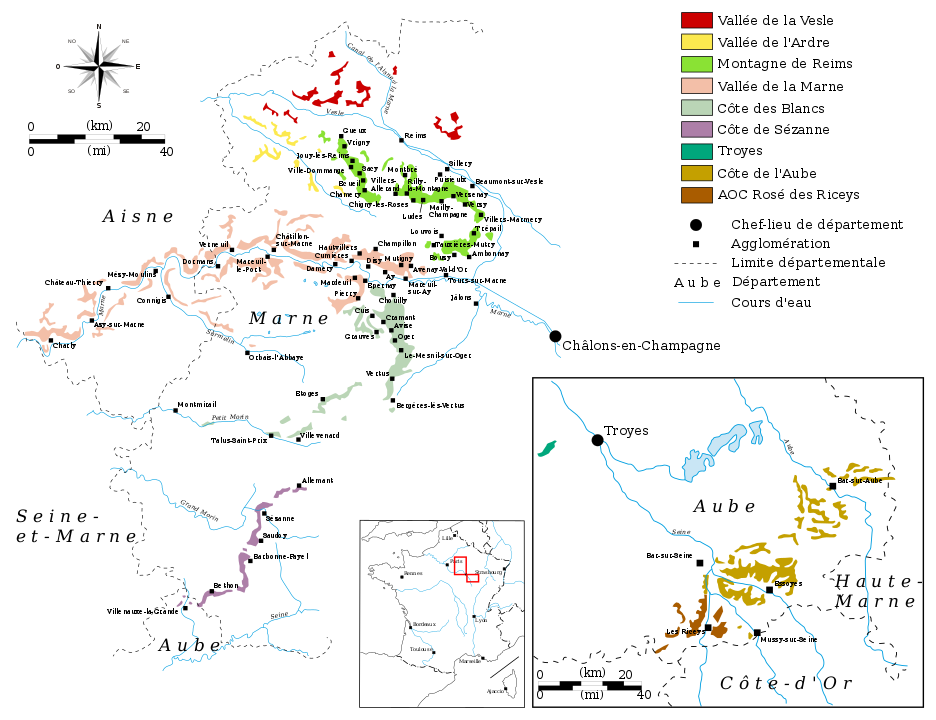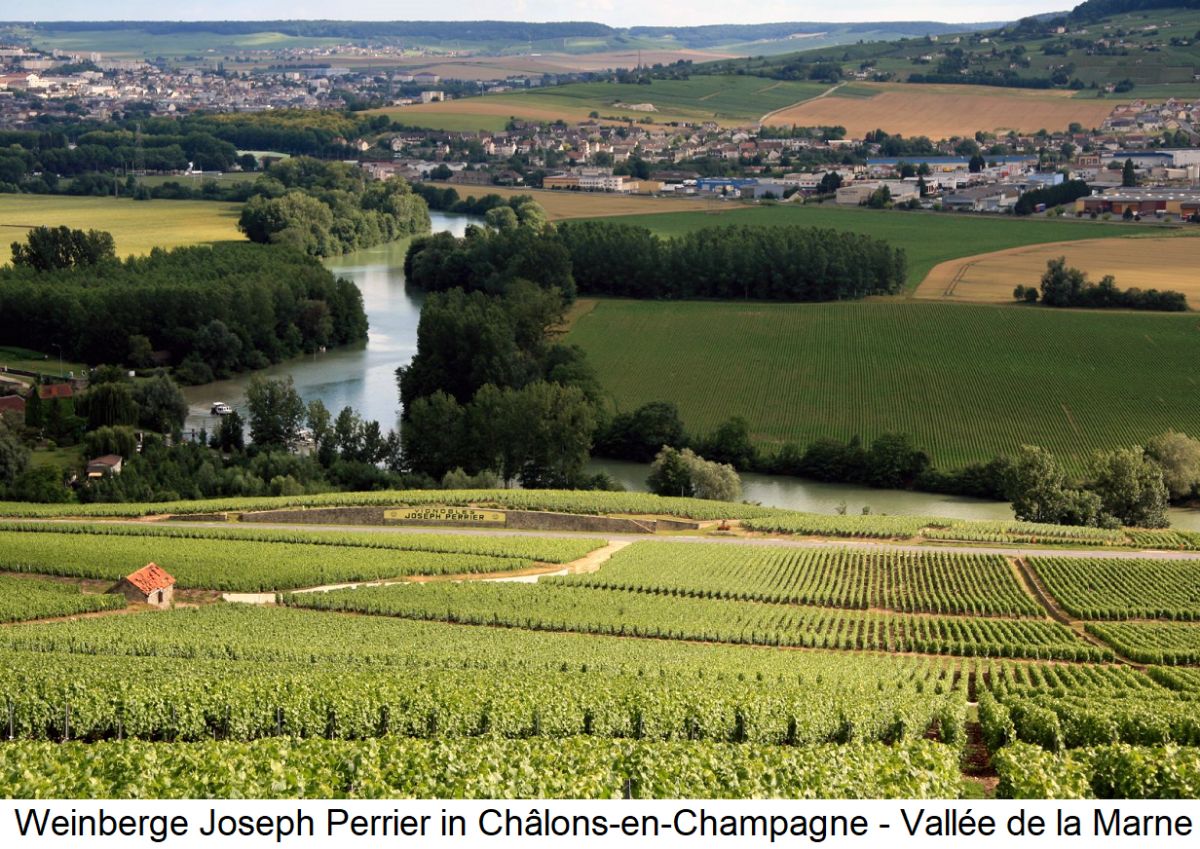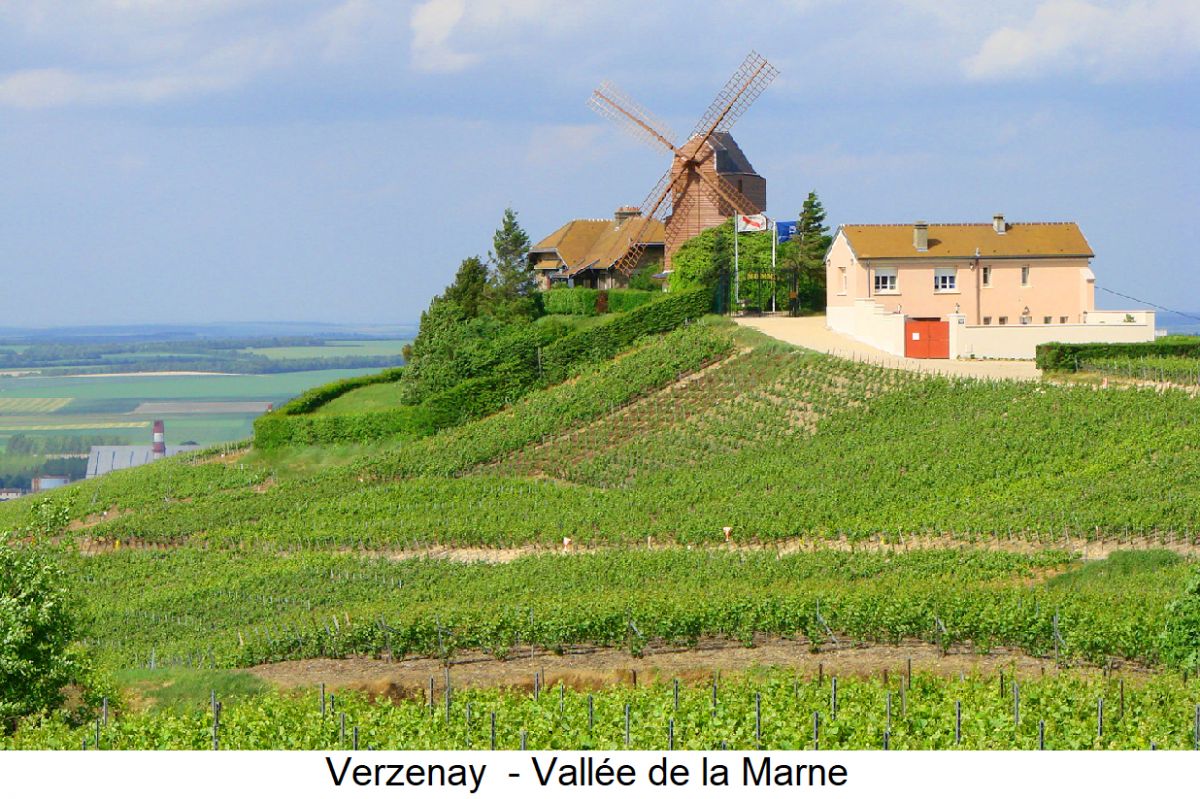Results
2,284 Results
Loading more Results ...
Loading more Results ...
| Champagne AOC |
Description to Champagne AOC
Champagne is the northernmost wine-growing region in France, located in the Paris Basin around 140 kilometres east of Paris. It gave the most famous sparkling wine in the world the protected name Champagne. It is not the same as the Champagne-Ardenne region or the historic Champagne region. The heart of the region is Reims, where almost all French rulers were crowned in Notre-Dame Cathedral, while Epernay and Chalons-sur-Marne are important towns. The name Champagne was initially not well received, as the term Champagne (Latin campania = field, open landscape) refers to an infertile soil that only serves as pasture for sheep.
Champagne belongs to the Grand Est region and borders the Hauts-de-France and Île-de-France regions to the west and Bourgogne-Franche-Comté to the south. Champagne's main rivers have their source in the mountainous regions on its eastern edge and flow through the region roughly parallel to each other in a wide arc, first more northwards and then more westwards. From north to south, these are the Aisne, Marne, Aube and Seine.

Région délimitée de la Champagne viticole
The "Région délimitée de la Champagne viticole" was first defined in 1908, the boundaries were then changed in 1911 and finally finalised in 1927. It consists of 20 areas, each with a fairly homogeneous soil type or terroir. These are divided into six regions: Côte de Champagne, Côte des Blancs, Côte des Bar, Montagne de Reims, Petit Morin et Grand Morin and Vallée de la Marne.
Champagne Treaty
Articles 274 and 275 of the 1919 Peace Treaty of Versailles were known as the "Champagne Treaty". These prohibited German products from bearing foreign designations of origin, which had been customary until then. This particularly affected champagne and cognac from German production, which from a French perspective were misleadingly named after French regions. Since then, these products have been labelled as sparkling wine and brandy. At the time, this did not apply outside the area covered by the peace treaty, such as Shampanskoye for Crimean sparkling wine.
Vineyards & grape varieties
The vineyards cover 34,000 hectares, mostly in the departments of Aisne, Aube and Marne, as well as smaller areas in Haute-Marne and Seine-et-Marne. Within this huge area are the small appellations Coteaux Champenois for non-sparkling still wines and Rosé des Riceys for the famous rosé wine. The three main authorised varieties for Champagne are Pinot Noir (38%), Pinot Meunier (33%) and Chardonnay (28%), which occupy 99% of the vineyards. The four varieties Arbane, Petit Meslier, Pinot Gris and Pinot Blanc are also authorised for historical reasons, but with 90 hectares of vineyards, they are of almost no significance in terms of quantity.

Échelle des crus
With the Échelle des crus classification system introduced in 1920, the communes are categorised into three classes according to soil type, location and climate and, for some grape varieties, also according to percentage. This then applies to the entire commune (i.e. all sites), with a distinction being made between red and white varieties in some cases. There are 320 AOC communes in total, 261 of which are simply "sans cru" (80-89%). The best sites are located in the 17 Grand Cru comm unes (100%) with 4,400 hectares of vineyards.
These are the Montagne de Reims region with the municipalities of Ambonnay, Beaumont-sur-Vesle, Bouzy, Louvois, Mailly-Champagne, Puisieulx, Sillery, Tours-sur-Marne, Verzenay and Verzy, the Vallée de la Marne region with the municipality of Aÿ and the Côte des Blancs region with the municipalities of Avize, Chouilly, Cramant, Mesnil-sur-Oger, Oger and Oiry. The 42 Premier Cru communes cover 6,000 hectares of vineyards (90 to 99%):
- 99%: Mareuil-sur-Aÿ and Tauxières-Mutry
- 95%: Bergères-lès-Vertus (white grapes), Billy-le-Grand, Bisseuil, Chouilly (red grapes), Cuis (white), Dizy, Grauves (white), Trépail, Vaudemanges, Vertus, Villeneuve-Renneville, Villiers-Marmery and Voipreux
- 94%: Chigny-les-Roses, Cormontreuil, Ludes, Montbré, Rilly-la-Montagne, Taissy and Trois-Puits
- 93%: Avenay-Val-d'Or, Champillon, Cumières, Hautvillers and Mutigny
- 90%: Chamery, Coulommes-la-Montagne, Coligny (white), Cuis (red), Ecueil, Etréchy (white), Grauves (red), Jouy-lès-Reims, Les Mesneux, Pargny-lès-Reims, Pierry, Sacy, Sermiers, Tours-sur-Marne (white), Villedomange, Villiers-Allerand, Villiers-au-Noeuds and Vrigny.
The percentage classification used to be used annually to calculate grape prices, monitored by the CIVC (Comité Interprofessionnel du Vin de Champagne), by determining the price for the Grand Cru grapes (100%) and all others according to their percentage status. Today, pricing is left to the market, with the Échelle des crus system still serving as a guide. A Grand Cru champagne may only be made from 100% grapes, a Premier Cru champagne only from at least 90% grapes.
However, producers rarely state the rank on the label of Cuvée de Prestige brands because wines from different vineyards are usually blended. The annual determination of grape prices, which is strictly determined depending on this classification, was abolished in 1999, but still serves as a guide. Of the approximately 19,000 winegrowers, the majority supply the grapes to the large Champagne houses, which only have a small share of 10%.

Soil type & climate
The secret of Champagne lies above all in the terroir, climate and the méthode champenoise. The soil, known as Craie à bélemnites, is consistently chalky with a sandy surface in places. The conditions are ideal for sparkling wine production, as the grape varieties grown here produce a light, fine and acidic base wine. The chalk allows the roots to grow very deep into the soil and also stores water. This also provides the ideal conditions for the cellars that run through Reims underground.
Year in, year out, these have an optimum, constant temperature of 10 to 11 °C and a humidity of 70 to 90%, which is very important for years of ageing. Around 300 million bottles of champagne are produced every year. Both Champagne and still wines may only leave the Champagne region in bottles (no tanks, barrels or other containers). The processing of Champagne base wines outside the defined area is therefore impossible or even prohibited by wine law.
Champagne map: By DalGobboM¿!i? - Own work, CC BY-SA 4.0, Link
Châlons-en-Champagne: Par Rob & Lisa Meehan
originally posted to Flickr as Champagne Vineyards, CC BY 2.0, Lien
Verzenay: By Vassil - Own work, Public domain, Link
Recent wines 428
 Tarlant
— Champagne
2006 Champagne AOC Brut Nature "le Vigne d'Or" (Deg.: 06.06.2022)
132.00 €
Tarlant
— Champagne
2006 Champagne AOC Brut Nature "le Vigne d'Or" (Deg.: 06.06.2022)
132.00 €

 Laurent-Perrier
— Champagne
Champagne AOC Brut Nature "Blanc de Blancs"
Laurent-Perrier
— Champagne
Champagne AOC Brut Nature "Blanc de Blancs"

 Champagne Laurent Lequart
— Champagne
Champagne AOC Pinot Meunier Réserve Extra Brut
87 WP
very good
27.60 €
Champagne Laurent Lequart
— Champagne
Champagne AOC Pinot Meunier Réserve Extra Brut
87 WP
very good
27.60 €

 Champagne Laurent Lequart
— Champagne
Champagne AOC Extra Brut Cuvée "Prestige"
90 WP
excellent
54.80 €
Champagne Laurent Lequart
— Champagne
Champagne AOC Extra Brut Cuvée "Prestige"
90 WP
excellent
54.80 €

The most important grape varieties
More information in the magazine
- Pinot Meunier awakens from a deep sleep Champagne: renaissance of an underrated variety
- Record sales and slavery in Champagne Streaming tip: Exploited for champagne
- Paradisiacal times! Tasting: European sparkling wines for the festive season
- Lots of freshness after 40 years of bottle ageing Piper Heidsieck winemaker Emilien Boutillat launches collector's series for fans
- Biodiversity instead of monoculture in the Champagne vineyards Ruinart plants around 20,000 trees and bushes with the "Vitiforestry" project
- Back to the cork, forward to sustainability How the Ruinart champagne house is adapting its production to climate change
- The right twist In the test: Sparkling wine opener
- How the Viennese Waltz became world famous with champagne Ron Merlino on Johann Strauss and the good business of wine and music
- Plaimont - The vine rescuers from south-west France Advertisement
- Good Bordeaux doesn't have to be expensive! Crus Bourgeois